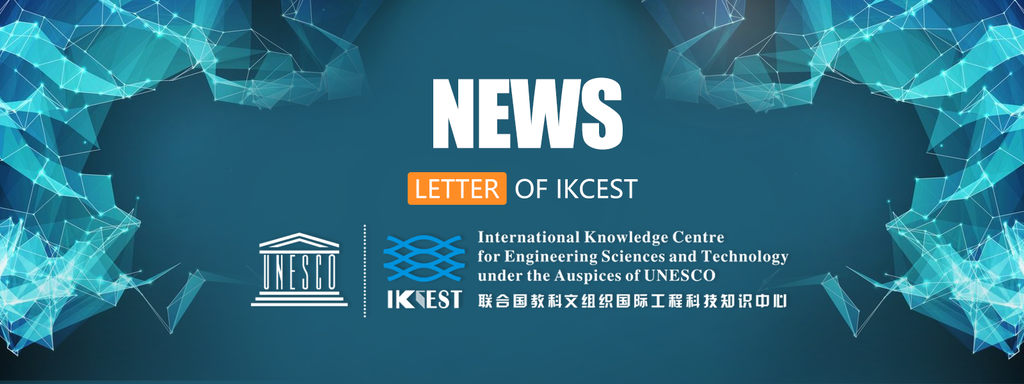
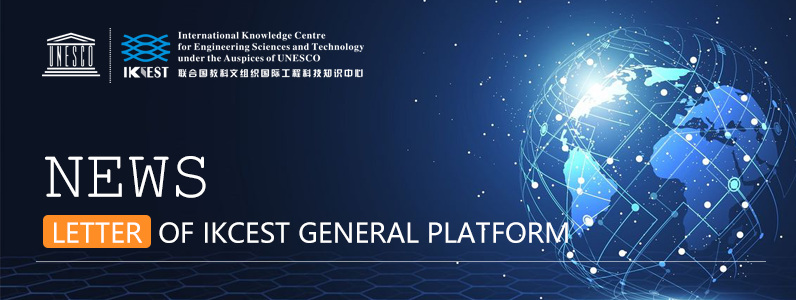
Knowledge application (知识应用)
Column of “COVID-19 Prevention and Control” (疫情防控专栏)
Introduction: Recently, COVID-19 has caused widespread concern at home and abroad. IKCEST thus launches a new column, COVID-19 Prevention and Control, bringing together China’s various prevention and control measures, updating the latest news about COVID-19 covered by prestigious media, and sharing ideas and methods of epidemic prevention and control. The latest scientific progress, perspectives and suggestions of experts and CAE (Chinese Academy of Engineering) Members who are at the forefront of COVID-19 prevention and control are also pooled in this column, along with touching stories of Chinese citizens in fighting the epidemic.
Source: IKCEST General Platform
Release date: Feb , 2020
Provided by: Cai Lingli, Zhang Xinxing
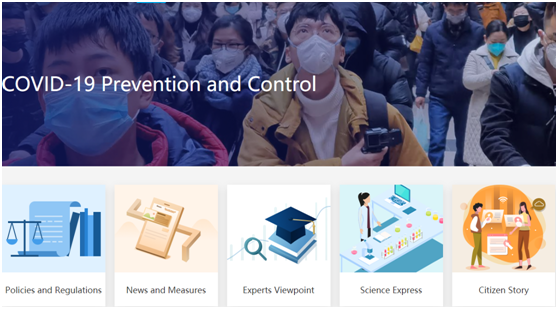
Video (视频课件)
Message from Professor Reddy, Turing Award winner, and chairman of the Competition Advisory Committee(漫谈人工智能、对话图灵奖得主、AI先驱Raj Reddy)
Introduction: Raj Reddy, Turing Award winner and AI pioneer, puts forward perspectives on development history, talent training, future direction and society impact of AI in an interview with the Synced. If you are following AI, this article is worth reading!
Source: IKCEST General Platform
Release date: Jan , 2020
Provided by: Cai Lingli, Zhang Xinxing

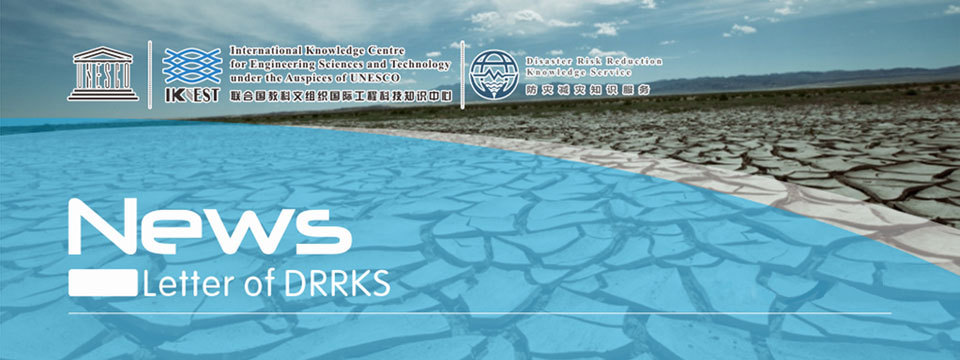
Scientific Data (科学数据)
Global monthly burned area from 1997 to 2016(1997-2016年全球逐月燃烧面积)
Introduction: This dataset provides global estimates of monthly burned area at 0.25-degree x 0.25-degree for 1997 to 2016 in HDF (.hdf) format (GFED4). Emissions data are available for carbon (C), dry matter (DM), carbon dioxide (CO2), carbon monoxide (CO), methane (CH4), hydrogen (H2), nitrous oxide (N2O), nitrogen oxides (NOx), non-methane hydrocarbons (NMHC), organic carbon (OC), black carbon (BC), particulate matter less than 2.5 microns (PM2.5), total particulate matter (TPM), and sulfur dioxide (SO2) among others. These data are yearly totals by region, globally, and by fire source for each region.
Source: Disaster Risk Reduction Knowledge Service
Release date: Dec , 2019
Provided by: Yuan Yuelei

Historical mean wind speed monitoring data set for south and southeast Asia (1989-2018)(南亚和东南亚历史平均风速监测数据集(1989-2018))
Introduction: The data set is calculated and interpolated by weather station data. The meteorological site data comes from NOAA, which includes data such as temperature, wind speed, and precipitation. The research team processes the daily weather station data into monthly data, and then interpolates through Kriging to form raster data covering the entire study area.
Source: Disaster Risk Reduction Knowledge Service
Release date: Sep , 2019
Provided by: Yuan Yuelei
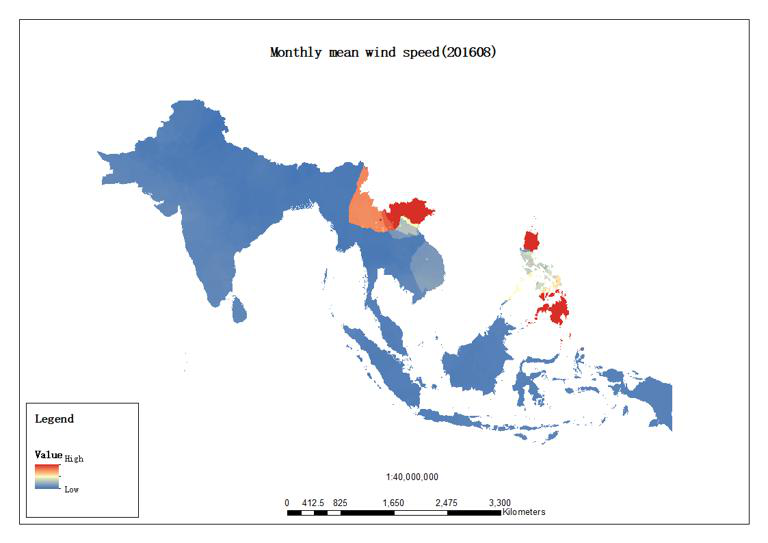
Knowledge application (知识应用)
Public opinion analysis for COVID-19(COVID-19舆情分析)
Introduction: In December, 2019, there was an outbreak of pneumonia associated with the 2019 novel coronavirus (COVID-19) in Wuhan, Hubei province in China. On the afternoon of January 30th, Geneva, World Health Organization (WHO) declared the novel coronavirus outbreak in China as a Public Health Emergency of International Concern (PHEIC). As a growing number of confirmed cases of infections is reported, the Chinese government have taken prompt response measures to curb the spread of the novel coronavirus (COVID-19).
Public risk communication activities have been carried out to improve public awareness and adoption of self-protection measures. With the rapid development of Internet, more and more people like to express their opinions and views on social media ( e.g. Sina-Microblog), which provides an innovative approach to observe public opinion under emergencies in disaster events. The Disaster Risk Reduction Knowledge Service System of IKCEST analyzes public opinion during the novel coronavirus outbreak through integrating the social media analytics and GIS methods.
Microblog (http://us.weibo.com), a Twitter-like microblogging system, is the most popular microblogging service in China. Through the permitted data API of sina Microblog, original Microblog messages are collected with “coronavirus” and “pneumonia” as the keywords since 00:00 on January 9, 2020. The following information was extracted: user ID, timestamp (i.e., the time when the message was posted), text (i.e., the text message posted by a user), and location information. Then, we analyzed the Microblog texts related to the novel coronavirus outbreak in terms of space and time. The temporal changes within an hour and one day intervals are investigated. The spatial distribution on provincial levels of epidemic-related Microblog are analyzed. And we performed a kernel density estimation using ArcGIS to identify the hot spots of public opinion.
Source: Disaster Risk Reduction Knowledge Service
Release date: Feb , 2020
Provided by: Yuan Yuelei
Video (视频课件)
Safety of Built Environment (Policy Analysis) (建筑环境安全(政策分析))
Introduction: This course introduces the role of UNESCO in Disaster Risk Reduction, which promotes international and interdisciplinary cooperation in many aspects of Disaster Risk Reduction. In terms of earthquake disasters, this course analyses the current situation of earthquake disasters and concludes that the main cause of death in earthquakes is the collapse of buildings. In order to raise the awareness of policy makers in earthquake-prone countries of publishing earthquake hazards caused by building collapse, UNESCO collects information on strategies in building environment through questionnaires and analyses the status quo and evening extent of anti-earthquake and disaster strategies in a country or region through various ways. Finally, the existing classical cases are introduced, and possible suggestions on the overall approach/priority and cross-border cooperation are put forward.
Source: Disaster Risk Reduction Knowledge Service
Release date: 2019
Provided by: Yuan Yuelei
Use of Earth Observation Technology for Disaster Mitigation(利用地球观测技术减轻灾害)
Introduction: This course is intended to provide an overview of selected existing methodologies and tools for disaster risk management and studies and build capacities on the remote sensing methodology for identifying and reducing risks related to disasters and climate change (Identify, assess and monitor disaster risks for sustainable development). A series of case studies will be present to help all the participants understand main threats of the human society from disasters and climate change (Strengthen the understanding of disaster preparedness for effective response at all levels). The course will build up a common understanding of the main challenges of the human society to disasters and climate change, and main lessons from past experience (Post disaster damage is linked to pre-disaster vulnerability due to lack of maintenance and loss of knowledge).
Source: Disaster Risk Reduction Knowledge Service
Release date: 2019
Provided by: Yuan Yuelei
Report (报告)
Summary of The Third International Workshop for Disaster Risk Reduction Knowledge Service (第三届防灾减灾知识服务国际研讨会总结))
Introduction: The Third International Workshop for Disaster Risk Reduction Knowledge Service was held on 13 and 14 December 2019, in Beijing, China. Organized by the Institute of Geographic Sciences and Natural Resources Research, Chinese Academy of Sciences (IGSNRR, CAS), the workshop was co-hosted by the International Knowledge Centre for Engineering Sciences and Technology under the Auspices of UNESCO (IKCEST) and Section on Earth Sciences and Geo-Hazards Risk Reduction, United Nations Educational, Scientific and Cultural Organization (UNESCO DRR).
Source: Disaster Risk Reduction Knowledge Service
Release date: Feb,2020
Provided by: Yuan Yuelei
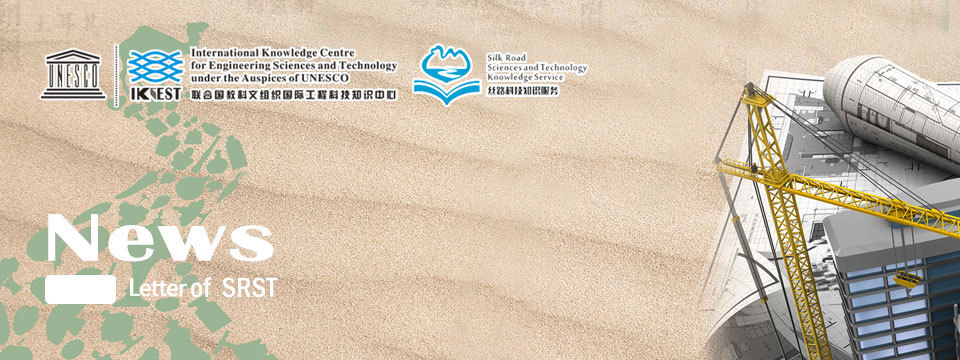
Scientific Data (科学数据)
World Development Indicators-Afghanistan(世界发展指标-阿富汗)
Introduction: Contains 55 data items from Afghanistan with data spanning 50 years (1968-2017). Visual display of data, including line, bar, scatter, and pie charts of indicators. Provides all generated display effects export functions. The download contains Chinese, English, Russian, and Arabic languages.
Source: Silk Road Sciences and Technology Knowledge Service
Release date: Jan , 2020
Provided by: Zhang Qianglong

Knowledge application (知识应用)
The World Rank of Egyptian Universities(“一带一路”高校排名-埃及)
Introduction: A knowledge application for comprehensive display and inquiry of Egyptian Universities is built to comprehensively display four internationally recognized world university rankings, such as QS, THE, US News and soft science world university rankings, so as to facilitate engineering and scientific personnel from countries along the " Belt And Road" to recruit students and choose schools in countries along the " Belt And Road".
Source: Silk Road Sciences and Technology Knowledge Service
Release date: Jan , 2020
Provided by: Zhang Qianglong

Video (视频课件)
Vision and Art(视觉与艺术)
Introduction: This course brings together multidisciplinary knowledge such as philosophy, aesthetics, and psychology, and cuts in from a unique perspective. This course is customized for ordinary college students across the country. This general knowledge covers visual and visual art phenomena, visual art history, and visual art thinking mode Classes of visual literacy.
Source: Silk Road Sciences and Technology Knowledge Service
Release date: Jan , 2020
Provided by: Liu Jun



Scientific Data (科学数据)
Academic Trend Database
Target groups: To meet the needs of college students, engineers and researchers in the field of engineering to consult relevant works in various fields of engineering to meet their study, work and research needs.
Main functions: Collect relevant works in various fields of engineering at home and abroad, as well as the detailed information of the publishing house, publication number and introduction of the works, so as to facilitate the access of engineering knowledge to college students, engineers and researchers in the field of engineering.
Introduction: Click the "Publication" icon on the home page to enter the book database page. In the upper left corner of the page, you can choose to search works in Chinese or English.
Source: Engineering Education Knowledge Service
Release date: Dec , 2019
Provided by: Tian Huijun , Li Zhengwen
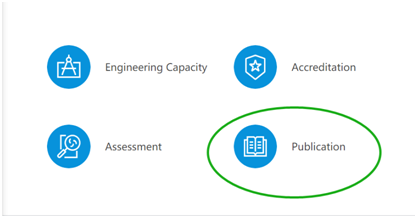
Knowledge application (知识应用)
Academic Voice and Focus(专家声音)
Introduction: The authoritative experts in the field of international engineering education interpret the new ideas, new trends and new technologies of international engineering education, and highlight the application and discovery of Internet information technology in the field of engineering education.
Source: Engineering Education Knowledge Service
Release date: Dec , 2019
Provided by: Tian Huijun , Li Zhengwen
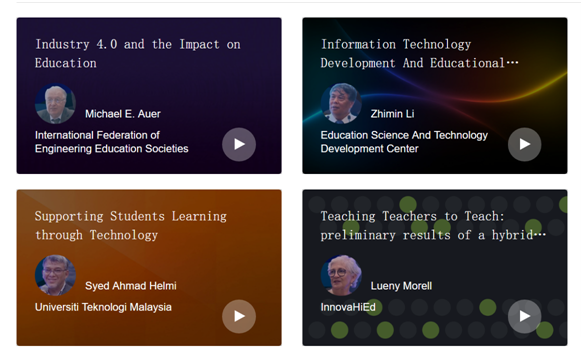
Video (视频课件)
Data Structures and Algorithm Design(2019)(数据结构与算法设计)
Introduction: Data structure is the key content of computer science, and it is also the necessary basis for building efficient algorithms. The knowledge involved is always at the core of the relevant professional curriculum system. This course aims at the design and implementation of various types of data structures, and reveals the principles and methods of the laws. At the same time, it aims at students' understanding and mastering the main routines and methods for algorithm design and performance analysis. The topics taught extend from basic data structures to recent research results.
Source: Engineering Education Knowledge Service
Release date: 2019
Provided by: Tian Huijun , Li Zhengwen
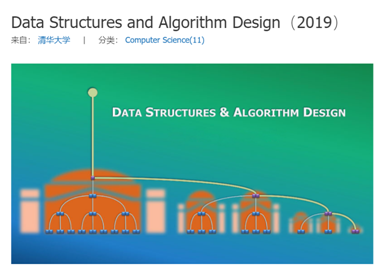
Software as a Service, Part 2(软件即服务(SaaS)-第2部分)
Introduction: Semester engineering software as a service course at the University of California, Berkeley. In the first part of CS 169.1x, students deployed a simple SaaS application on the cloud using agile development methods. In the second part of CS 169.2x, students will create more complex applications by adding relationships to modules, and complete the applications with JavaScript. Students will also learn what happens when the application is actually distributed to users, including How to monitor performance, how to find common performance problems and try to solve them, how to avoid harming customer data. Finally, students will learn how to apply agile techniques to improve and restructure legacy code, which is a necessary skill for professional programmers.
Source: Engineering Education Knowledge Service
Release date: 2019
Provided by: Tian Huijun , Li Zhengwen
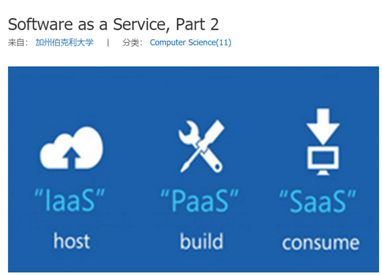
Circuits and Electronics Ⅱ(电路和电子学II)
Introduction: The course introduces engineering in the context of the lumped circuit abstraction. Topics covered include: resistive elements and networks; independent and dependent sources; switches and MOS transistors; digital abstraction; amplifiers; energy storage elements; dynamics of first- and second-order networks; design in the time and frequency domains; and analog and digital circuits and applications. Design and lab exercises are also significant components of the course. The course is organized by weeks. To keep pace with the class, you are expected to complete all the work by the due dates indicated. Homework and labs must be completed by the Sunday of the week following the one in which they are posted. Weekly coursework includes interactive video sequences, readings from the textbook, homework, online laboratories, and optional tutorials. The course will also have a midterm exam and a final exam. Those who successfully earn enough points will receive an honor code certificate from MITx.
Source: Engineering Education Knowledge Service
Release date: 2019
Provided by: Tian Huijun , Li Zhengwen

Circuits and Electronics Ⅲ(电路和电子学III)
Introduction: The course introduces engineering in the context of the lumped circuit abstraction. Topics covered include: resistive elements and networks; independent and dependent sources; switches and MOS transistors; digital abstraction; amplifiers; energy storage elements; dynamics of first- and second-order networks; design in the time and frequency domains; and analog and digital circuits and applications. Design and lab exercises are also significant components of the course. The course is organized by weeks. To keep pace with the class, you are expected to complete all the work by the due dates indicated. Homework and labs must be completed by the Sunday of the week following the one in which they are posted. Weekly coursework includes interactive video sequences, readings from the textbook, homework, online laboratories, and optional tutorials. The course will also have a midterm exam and a final exam. Those who successfully earn enough points will receive an honor code certificate from MITx.
Source: Engineering Education Knowledge Service
Release date: 2019
Provided by: Tian Huijun , Li Zhengwen

>>>IKCEST Newsletter 2019 December<<<
>>>IKCEST Newsletter 2019 October<<<









 User Center
User Center My Training Class
My Training Class Feedback
Feedback







